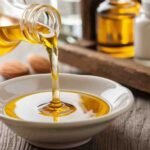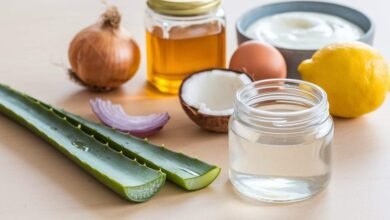Simple Steps to Make Rosemary Oil at Home Perfectly In 1 hour
Introduction to Rosemary Oil
Rosemary oil is an uncolored, spicy, and aromatic substance derived from the rosemary plant of the Rosmarinus off Incin Society. Rosemary oil is extracted from the leaves of the rosemary plant and has a strong woody smell and aroma; it has multiple medical uses, and it is widely used in cultural traditions. This is most frequently used in aromatherapy, cooking, and as medicine, for treating various illnesses. The preparation of rosemary oil has progressed greatly to include contemporary ways of preparing it. However, they still contain the conventional way of preparing rosemary oil hence making it achievable for anyone interested in preparing the rosemary oil on their own.
History and Origins of Rosemary Oil
Rosemary is indigenous to the Mediterranean region, and, as the following history of its cultivation as a crop will show, has a long history of use by man. The Greeks, Romans, and Egyptians are well known to have had uses for the rosemary plant for relating to do with religion, among other uses were even known to use it as a medicine. The name of the plant itself has a Latin root – rosemary comes from the phrase ‘ros marinus,’ which translates into English as ‘dew of the sea,’ as the plant prefers the climate of sea coasts.
Nowadays, the production of rosemary oil is not only constrained by the tradition used by Roman households; Instead, it is through the application of advanced technology to maximize its medicinal qualities and to be widely used.
Uses and Benefits of Rosemary Oil
Y-recognized and respected globally for its numerous uses, rosemary oil is a classic product with a range of functions. In aromatherapy, it is used to induce relaxation, relieve stress, and boost one’s mind’s focus on activities that need to be performed. for hair care, rosemary oil is said to realize the growth of hair as well as address some issues including dandruff. It has a good anti-inflammatory and antimicrobial effect, making it highly beneficial for skin care and for managing acne and skin inflammation.
Moreover, rosemary oil relieves pain in the muscles such as during a rig and arthritis besides headaches by applying it on the affected area and massaging it as a remedy to pain instead of having to go for a chemist and buy medications.
Understanding the Basics
To prepare rosemary oil, one must recognize the variety of rosemary plants, the raw components of rosemary oil message, and the tools and reagents used. Here are the common forms, namely: Common Rosemary, Prostrate Rosemary, and Tuscan Blue Rosemary. Among the SPECIES, Common Rosemary D. officinalis is the most commonly subjected to oil extraction, due to its relatively high EO yield.

Besides, camphor has a cool effect and analgesic properties, 1,8-cineole (eucalyptol) with antibacterial and anti-inflammatory effects, α-pinene with anti-inflammatory and bronchodilator activity, and verbenone for a positive impact on the process of skin regeneration and respiratory function. The source of raw material for the preparation of rosemary oil is fresh rosemary leaves or dried rosemary leaves. Other required utensils include carrier oil such as olive oil or coconut oil, glass jars or bottles for storing the oil, a strainer or cheesecloth to help in the separation process, the heat source for cases where hot infusion and distillation methods are used, and distilling apparatus for the distillation method.
Preparing for Rosemary Oil Extraction
This variety determines the outcome of the endeavor, and that is why it is appropriate to select the best rosemary. The original form to use is fresh rosemary, although dried can also be used in case fresh one is not available. Make sure the leaves are pesticide and chemical-free. In harvesting rosemary, the best time is in the morning after the dew has evaporated and before the scorching sun sets in. Prune the plant using a sharp scissor or pruning shears; this trimming should be done by eliminating the apical dominance of 5-6 inches upwards, though it is advised that one should not trim a plant more than one-third of its height for a succession of new shoots.
Before extraction of the rosemary, washing and drying of the herb is paramount. Trim the rosemary sprigs and under gentle running water wash them to remove any dirt and insects and blot them dry with a piece of clean cloth. To dry the sprigs, suspend them with the little flowers pointing downwards in a cool dry place, or place the sprigs in the dehydrating tray and place them in an oven at a very low temperature, until they are dry.
Methods of Making Rosemary Oil
There are three primary methods for making rosemary oil:
Cold Infusion Method
The cold-inf method entails submerging rosemary in the carrier oil with the temperature of the oil allowed to stabilize to room temperature and left to soak for a prolonged duration. This approach is easy to apply and maintains the structure of rosemary, which may easily be crushed with other methods. Firstly, one should prepare fresh or dried rosemary and carrier oil free from any debris. Use scissors to cut the rosemary leaves so that they can occupy more space on the water to be infused so that more of the rosemary can dissolve into it, subsequently fill the glass jar in which the rosemary is about half full.
Add the carrier oil to the rosemary until there is little space at the top of the jar, making certain that all the rosemary is covered. Shake in the jar in this way several times a week, then screw the lid shut and leave the jar in a cool, dark place for four to six weeks. When the infusion period is over, filter the liquid with the help of a strainer or cheesecloth and remove the rosemary needles from the oil. Pour the strained oil into clean dark glass bottles, relabel, and date them for future purposes.
Hot Infusion Method
The hot infusion method speeds up the extraction process by gently heating the rosemary and oil mixture. This method is faster but requires careful temperature control to prevent degradation of the oil. Gather fresh or dried rosemary and carrier oil, and set up a double boiler or slow cooker. Fill the bottom pot with water and place the top pot over it, or set the slow cooker to low heat. Place the chopped rosemary and carrier oil in the top pot or slow cooker, heating the mixture on low for 2-4 hours, ensuring the temperature stays below 100°F (38°C).
Stir the mixture occasionally to ensure an even infusion. After heating, strain the mixture using a strainer or cheesecloth to separate the rosemary from the oil. Transfer the strained oil to clean, dark glass bottles, label, and date them.
Distillation Method
The second method is comparatively modern and involves the process called steam distillation through which essence from rosemary is extracted in the form of essential oil. This method produces the highest concentration of oil but it is pertinent to the need for specific apparatus. The distillation apparatus should be arranged as it was specified by the manufacturer of the particular equipment. Put the fresh rosemary in the still, pour water into the still, allow it to be sufficient enough to cover the base of the rosemary, and heat it so that the water starts boiling.
While the steam is rising and passes through the condenser, collect the distillate, a combination of water, and the essential oil in a collector flask. Cool the distillate and the aqueous layer and then isolate the oil from the hydrosol or floral water using a separator funnel or decanting technique. Pour the distilled rosemary water into small dark glass bottles and transfer the pure rosemary essential oil into them as well, labeling and dating each of them.
Ensuring Quality and Safety
Therefore, to be on the right side of the law while ensuring the quality and safety of the extracted fuel, the following steps are: In cases of using rosemary oil for external use, conduct a test on a small area of the skin as a way of maintaining purity. It is very important to never apply essential oils directly and always mix them with carrier oil before applying them on the skin.
A major factor that affects oils is heat hence the storage place of oils should be cool and away from direct sunlight. Record each batch to ensure that one would identify the reason as to why a certain batch was rejected Entropy the appearance of the oil by checking its aroma, color, and consistency and discard the oil if the latter has an off smell or changes its color and consistency.
Storing and Using Rosemary Oil
There are various factors to consider in the preservation process which include proper storage techniques to expand its shelf life. This type of bottle preserves the integrity of the oil behind dark glass and should be stored in a cool and dark location. It is crucial to make a distinction with words or tags about the type of beverage and the date it was bottled. It is possible to utilize rosemary oil for a period of up to one year if it is well stored.
Rosemary oil is more versatile and can be used in a: Drop or two in a diffuser for aromatherapy, massaging a mixture of rosemary oil and carrier oil directly into the scalp for extra hair growth, including rosemary oil in lotions or creams but sparingly in cooking where it will help to bring out the taste of the food.
Conclusion
Preparing rosemary oil requires few ingredients and time, but the final product is indeed very useful and valuable for many treatments. No matter the strategy that you decide to employ, the cold infusion, hot infusion, or distillation approaches have their benefits and limitations. After identifying the features and differences of various types of rosemary plants, the components of the rosemary oil, and the important pieces of equipment and substance you will be able to produce your high-quality rosemary oil. They should also insist on the quality of the oil and safety when extracting oil, as well as ensure that the oil is well preserved to avoid spoilage.
Taking into account the numerous functions and advantages of rosemary oil, the recipe presented above will be a useful addition to your daily rituals aimed at enhancing your health. Also follow us on Medium and Pinterest.
FaQs:
What Ingredients Do I Need to Make Rosemary Oil?
To prepare rosemary oil you will require fresh or dry rosemary leaves and a carrier oil in this case olive oil or coconut oil or jojoba oil. The process used to prepare the rosemary is fairly straight forward where the person drenches the rosemary with the carrier oil then drains the oil to obtain the enriched extraction.
How Long Does It Take to Make Rosemary Oil?
It actually takes a few hours to a few weeks depending to the kind of process used in preparing rosemary oil. An accelerated approach is merely to warm the rosemary and the oil gradually in a water bath for several hours. If you prefer a strong broth that takes time to impart all the flavors into the broth, you can leave it in a warm, sunny place for up to 2 weeks, stirring from time to time to release the oils.
- Top 10 Moisturizers for Every Skin Type
- Top 6 Benefits of Primose Oil For Skin.
- My Dental Healthy Journey
- Understanding Hair Porosity: Tests, Tips, and Care Routines
- Top 10 Amazing Benefits of Rose Water for Skin
- Aloe Vera Hair Masks for Healthy and Beautiful Hair
- Natural Ways to Remove Sun Tan Fast
- How to Get Thick Hair: Simple Habits for Thicker, Longer Hair
- Is Jojoba Oil Good for Low Porosity Hair?
- Top 7 Skin Benefits of Batana Oil
- DIY Face Masks for Glowing Skin: Natural Remedies
- Natural Remedies for Clear Skin: Glow Naturally
- Rosehip Oil for Acne Scars: Does It Really Work?
- Almond Oil for Hair: Tips for Thicker Locks
- Top 10 Natural Remedies to Stop Hair Fall



















nice